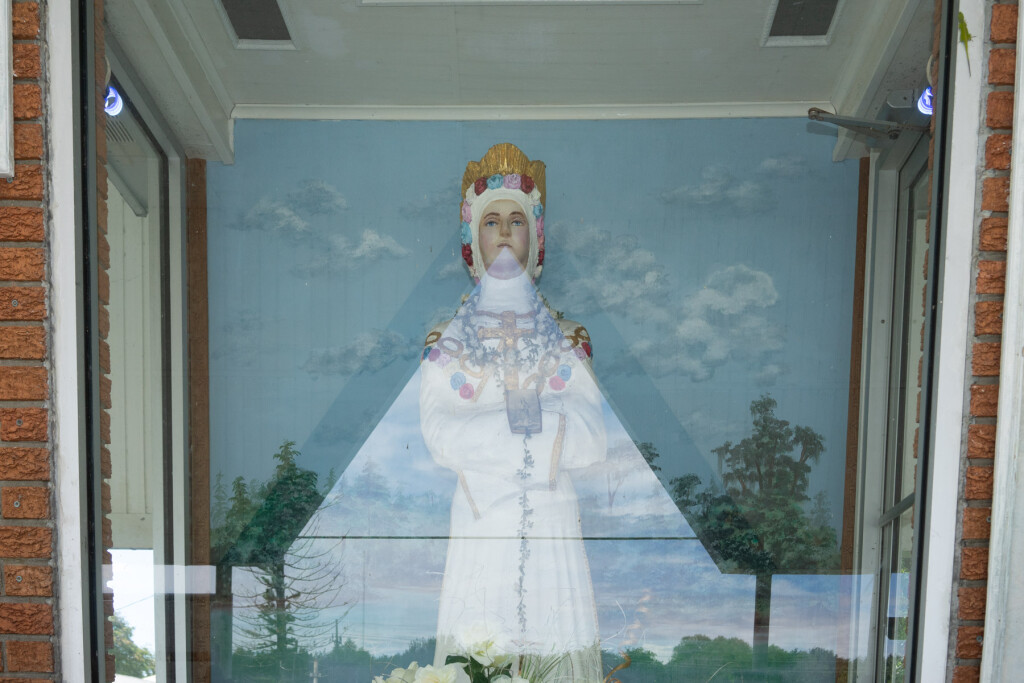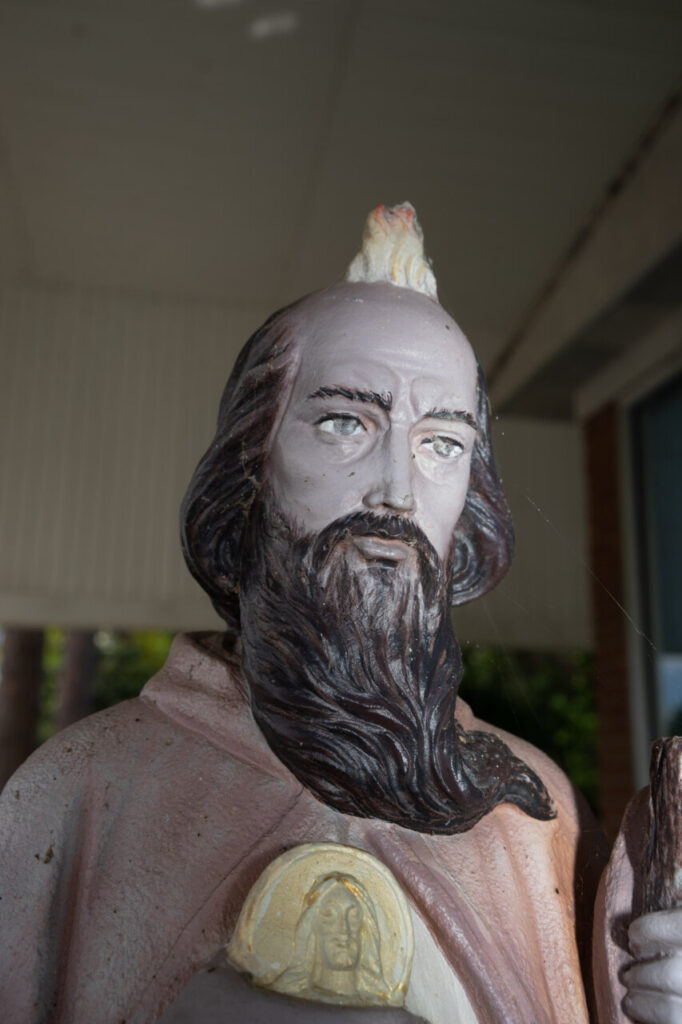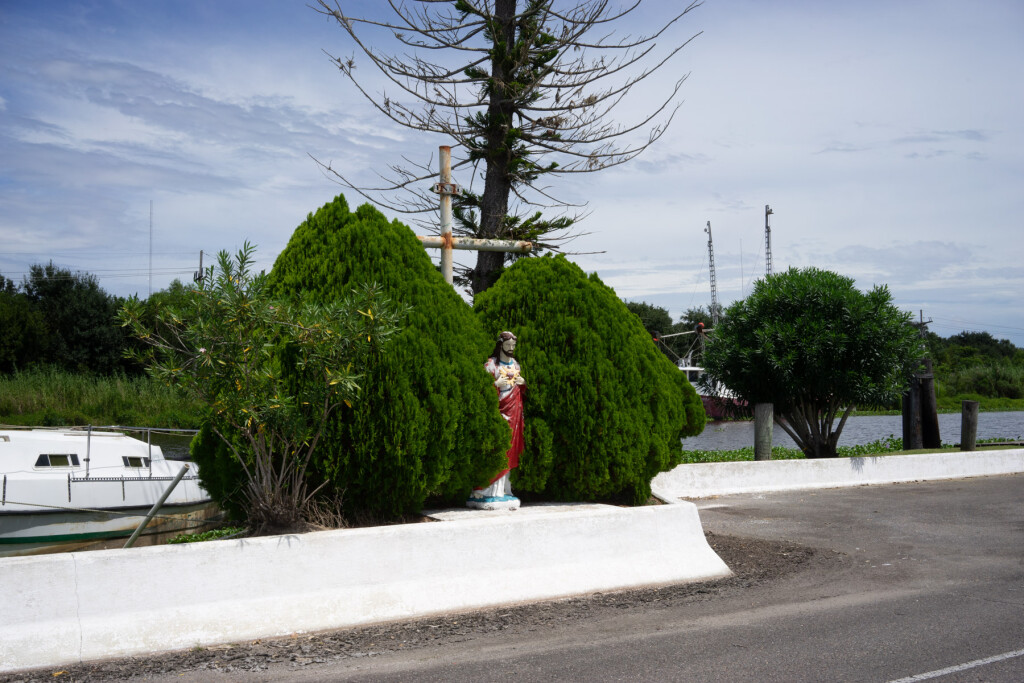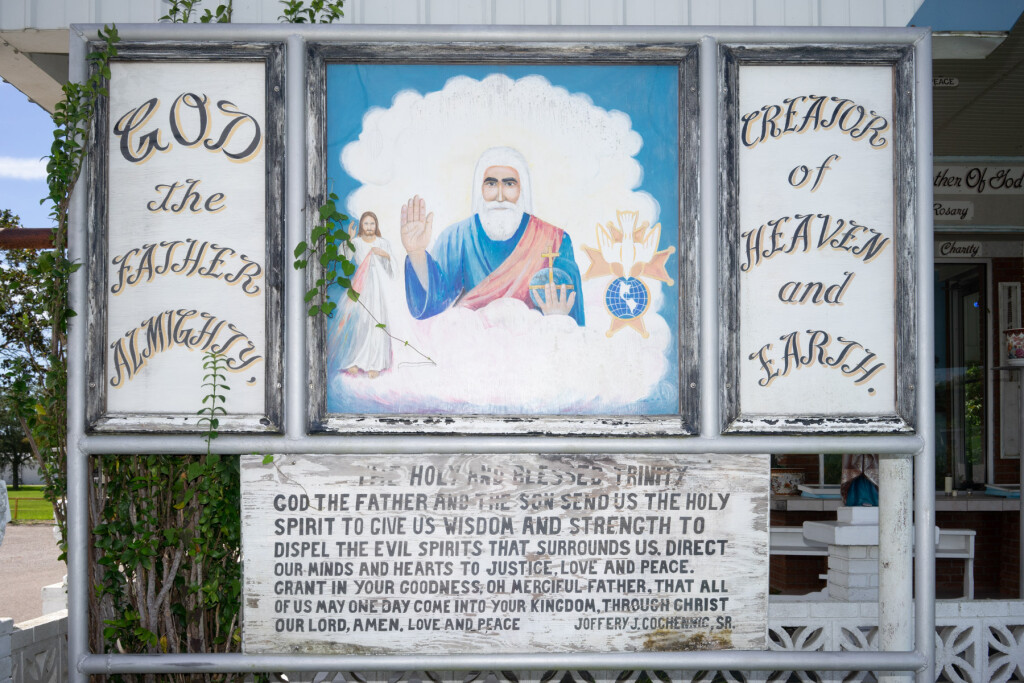Little Cajun Saint
The plastic bin overflowed with prayers of intercession. Each letter started with “please”, listed specific ailments of loved ones, and then asked Charlene for help. Some included photographs with arrows pointing to people with itemized prayer needs. So many people are in pain and so many people need help.
I rubbed my hand along her name—Charlene Marie Richard—and felt inspired to dig into my camera bag to find a scrap of paper and leave my request. I accept that good and bad things happen to my loved ones, but I could ask Charlene to ease their suffering when the worst happens. Her gravesite is about 30 minutes Northwest of Lafayette, Louisiana, and felt magical, especially in the drizzly rain.
Charlene died on August 11, 1959, at the age of twelve. Her family described her as a typical kid. She loved Elvis and horses, excelled at math, and didn’t stand out. A few weeks before her death, her teacher reached out to her parents, Mary Alice and Joseph, saying that she was acting unusual and kept mentioning a tall woman in black following her. Her parents took her to the doctor where she was diagnosed with leukemia. She was immediately hospitalized and lived her few remaining days at the hospital.
During that stay, Charlene got close to Father Joseph Brennan—a Catholic priest newly ordained and fresh to the area. The young girl was in great pain but latched on to the idea of redemptive suffering after conversations with him. Earlier that year, Charlene had read a book about Therese of Lisieux—a popular saint often referred to as Little Flower—which included her prayer, “Thank You, O my God! For all the graces You have granted me, especially the grace of making me pass through the crucible of suffering.”
Charlene hoped she’d get to be a saint, too, and so accepted her grim fate. She offered her suffering to God and prayed for the people in the hospital. Father Brennan witnessed these prayers and saw that all either converted before dying or made miraculous recoveries.
Over the years, people continued to talk about Charlene and her grace while dying. In the 1970s, the booklet Charlene, a Saint from Southwest Louisiana was distributed in the region. By the late 1980s, the booklet spread nationwide. In the 1990s, she was featured on the popular TV show Unsolved Mysteries, and she was recently the subject of a lengthy The New York Times piece. As the word spread, her file at the Lafayette archdiocese grew. There are now over 1,600 miracles attributed to her.
Some miracles were almost instantaneous, like with Alyse Graham. She was born premature and got to the point where they removed her from life support. Her distraught grandfather placed his Charlene Richard prayer card on her chest and the dying infant became pink and healthy.
Mary Lou Swanson, an Illinois woman in her 50s, was dying of an autoimmune disease called limbic encephalitis. She wanted to visit the Little Cajun Saint’s grave after seeing the Unsolved Mysteries segment. She was embarrassed to ask her husband to take her after seeing a sensational TV show, but it was her last hope. She had no energy and had completed the paperwork for a “do not resuscitate” order. Within weeks of her visit, doctors declared her disease-free and given a typical life expectancy.
For others, the miracle was comfort. Caroline Meyer Riley, of Waterloo, Ontario, felt compelled to go after reading The Times piece. She was in remission but was nervous about heading back to MD Anderson for her next visit. She was filled with peace after visiting Charlene and it helped her through her last days after her terminal diagnosis.
In 2020, Bishop J. Douglas Deshotel started the formal process to have Charlene named a Servant of God. This was the first of four steps to have her canonized. They voted to continue the process the next year during the Conference of Catholic Bishops.
They will need to verify she lived a virtuous life and attribute one miracle to her name. Many speculate that they will have trouble authenticating a miracle since most with recoveries were receiving medical attention when they reached out to Charlene. Regardless of the official outcome, she is already the Little Cajun Saint and brings peace to all visitors.



Shrine of Saint Amico
In the quiet town of Donaldsonville, Louisiana, a tiny chapel built in 1907 sits at the end of a short road. It stays unlocked, with a simple wooden stop at the top to keep the doors from swinging open. Once inside, the room smells damp and friendly.
When slavery was legal, enslaved people were forced to work the sugar cane along the river and bayous. During reconstruction, the plantations along Bayou La Fourche recruited people from Italy to come over and work. Once here, they labored in the fields and many went on to sell seafood and produce.
In 1906, Tony Musco, a recent immigrant, sat over his dying son Lucian. While going to get some supplies, Tony ran across a mysterious man asking for a ride in the opposite direction. Tony explained he wasn’t headed to town, but during their conversation, the stranger told him he was a healer and offered to visit his home. He performed a few rituals and disappeared. The next day, the son was cured. He pointed to a small print of Saint Amico on the wall and said that was the man who had visited him.
Saint Amico is the patron saint of San Pietro Avellana in Italy. He lived a virtuous life as a hermit and monk. He was a friend to all creatures and one of his miracles was ending a famine.
After much rejoicing, Tony vowed to make an offering to the Saint. He saved money for a year and began work on the chapel. Over the years, he added to the chapel and it doubled in size.
The Sunday after Easter, the townspeople marched with a large Saint Amico statue from the chapel down the road to the big church. The tradition lasted for nearly a century, bringing descendants of the Musco family and believers together. Since so many people have moved, the last parade was in 2016. The beautiful structure is being maintained and is open for those who want to visit and pay their respects.




Holy Mary Shrine
Like Alfredo Raimondo, Joffery Cochennic, Sr. was also visited by the Holy Mother.
In 1974, Joffery, then a salesman, routinely stopped at his local church to pray. One day, he thought about how much he wanted to see Mary. She appeared to him in an indescribably beautiful form. He went home and told his wife, Kate, about it. Between tears of joy, he said he would build a shrine and devote his life to doing her will.
To share the beauty of this miracle with the world, he carved her likeness out of local red cypress, made her eyes a deep blue, and put a golden crown on her head. He never saw Mary again, but he saw sacred images in the clouds and trees.
He worked on the shrine from 1979 until death, often getting help from his fishermen friends. He used his carpentry skills to add more figures, benches, and a cover.





